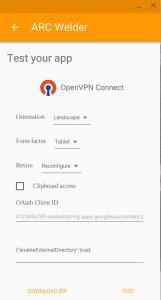I recently installed Ubuntu Wily Werewolf 15.10 as a chroot on my Chromebook Pixel 2. The process wasn’t as straightforward as I thought it would be so I will document it here.
First, I followed my own guide on how to set up a crouton chroot. The install would not complete – it was complaining about gnome-session-manager. I had to install the chroot with no GUI. This is the command I used (I specify a specific mirror to use because it’s much faster)
sudo sh ~/Downloads/crouton -r wily -t touch,extension,keyboard,cli-extra -e -n cinnamon -m http://mirrors.xmission.com/ubuntu
Once the initial chroot was set up, I installed cinnamon:
sudo apt-get install cinnamon-desktop-environment
After all that was installed, I followed my own guide on configuring cinnamon. I placed the following script in /usr/local/bin/startcinnamon on my chromebook (not the chroot)
APPLICATION="${0##*/}"
USAGE="$APPLICATION [options]
Wraps enter-chroot to start a Mint session.
By default, it will log into the primary user on the first chroot found.
Options are directly passed to enter-chroot; run enter-chroot to list them."
exec sh -e "`dirname "$0"`/enter-chroot" "$@" xinit
And I placed this file within the chroot, in my home directory:
echo "exec cinnamon-session" > ~/.xinitrc
I started by issuing the command
sudo startcinnamon
I noticed things didn’t look quite right. It turned out I was missing some icons. Fix this by installing them:
sudo apt-get install gnome-icon-theme-full
I then discovered gnome-terminal wouldn’t run – it would simply crash on exit error 8. I discovered that it was due to missing locale settings. The fix was found here, which involves installing the gnome language pack and setting your locale.
sudo apt-get install language-pack-gnome-en sudo update-locale LANG="en_US.UTF-8" LANGUAGE="en_US"
To instigate the changes you must exit all chroot instances.
That was it! After that bit of tweaking I have an Ubuntu 15.10 chroot working pretty well on my Chromebook Pixel 2.
